#soviet bombers
Text

Scenes from home, past and present.
#new orleans#old new orleans#civil defense#federal civil defense administration#cold war#american civil defense#the 50s#the 1950s#nuclear war#emergency alert system#nuclear attack#soviet bombers#warning sirens#aid raid sirens
4 notes
·
View notes
Text
Gotta love it when military aircraft manufacturers decide to make passenger aircraft in the laziest way possible, by taking a bomber design and just adding a wider fuselage, for example:

The Soviet Tupolev Tu-104

Comes from the Tu-16 medium bomber
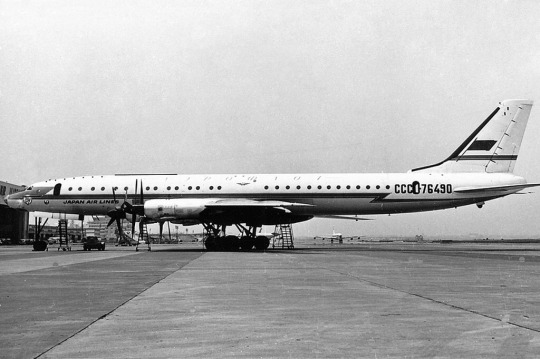
The Tu-114

From the Tu-95

And the Tu-70 prototype

Comes from the soviet copy of the American Boeing B-29 bomber, which also had an official airliner derivative
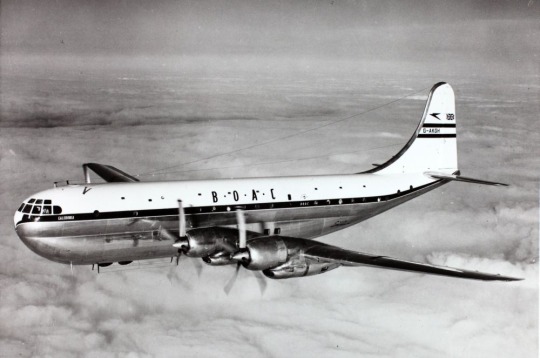
The Boeing Stratocruiser.
And since we’re outside the iron curtain
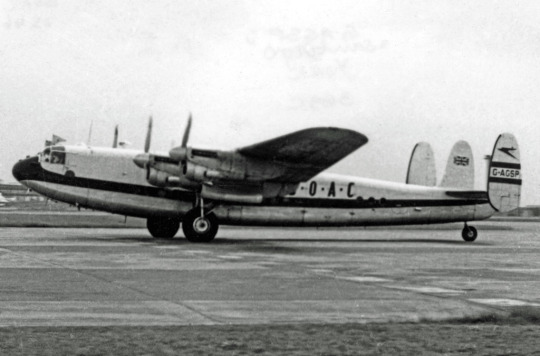
The British Avro York
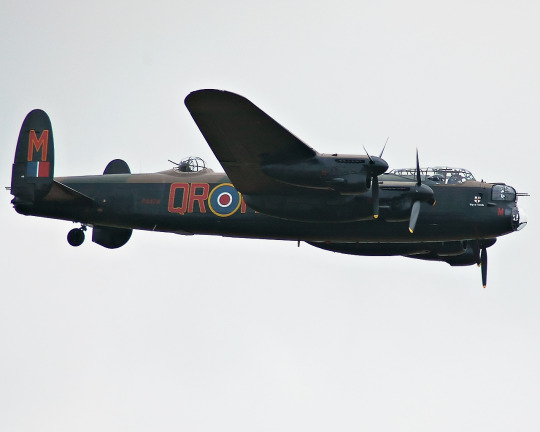
Is a heavily modified variant of the iconic Avro Lancaster heavy bomber.
260 notes
·
View notes
Video
Parachutistes soviétiques sautant depuis un bombardier lourd Tupolev TB-3 - 1930′s
#Avant-guerre#Pre-war#Armée soviétique#Soviet army#Armée rouge#Red Army#Parachutistes#Paratroopers#Aviation militaire#Military aviation#Bombardier#Bomber#Bombardier lourd#Heavy Bomber#Tupolev TB-3#TB-3#1930's
533 notes
·
View notes
Text

Tu-22 Cockpit
26 notes
·
View notes
Text

An English Electric Lightning intercepting a Tupolev Tu-95. Cold War Era.
E.E. Lightning VIDEO ➤➤ https://youtu.be/mVJB_DvroJs
Tu-95 VIDEO ➤➤ https://youtu.be/KPHNmN9BaBw
#youtube#aircraft#airplane#aviation#dronescapes#military#documentary#bomber#tupolev 95#tupolev#russian bomber#English Electric Lightning#interceptor#cold war#Tu 95#Tupolev Bear#Soviet bomber#English electric#Aviation#aviation lovers#aviation photography#aviation industry#aviation history#airplanes#soviet aircraft#russian aircraft#british airplane#british aircraft
48 notes
·
View notes
Photo

USAF F-4E Phantoms intercept a Tu-95 Soviet bomber near Iceland (1980)
#USAF#57th FIS#McDonnell Douglas#F-4E#Phantom II#Tupolev#Tu-95#Bear#Soviet aircraft#Bomber#Cold war#Fighter jets#F-4 Phantom
104 notes
·
View notes
Text

Natalia Meklin, the pilot of the 46 female night bomber squad (the night witches), author of the memoirs From Dusk to Dawn. 1945
81 notes
·
View notes
Photo

A Soviet TU-95 Bear-H aircraft being escorted by a US Navy F-14A Tomcat aircraft, and a US Air Force F-15 Eagle aircraft after it was intercepted approximately 350 nautical miles southwest of Adak, Alaska on 29 May 1987. Picture: US Navy
29 notes
·
View notes
Text
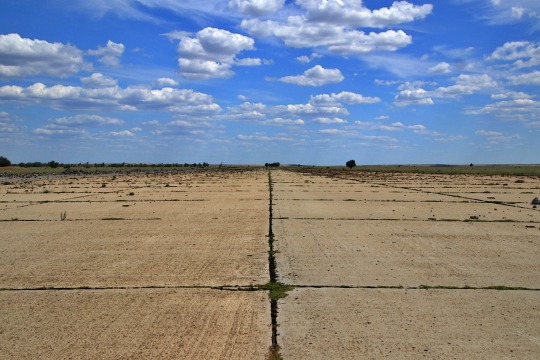







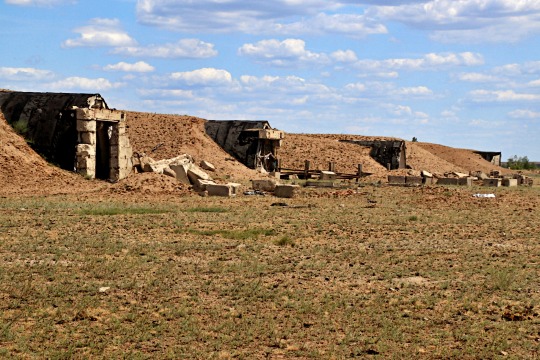
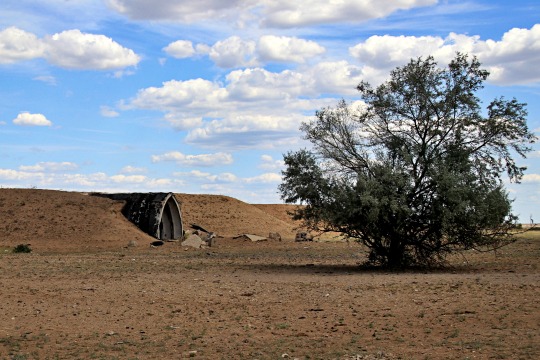
former Soviet long-range bomber base ( Dolon-Chagan / Kazakhstan )
#travelphotography#photooftheday#adventure#aroundtheworld#bomber#urbexphotography#travel#trip#pickoftheday#ussr#soviet union#urbexplaces#coldwar#longrange#soviet aircraft#abandoned places#abandoned#red army#explore#landscape#urbex#urbexworld#urbexexploration#lost places#airbase#cccp
3 notes
·
View notes
Text
91 whiskey actually ruined my life because it got me into not one but TWO fandoms of hbo war shows and now my dad thinks i'm interested in ww2
#i did watch a shit ton of movies#tell me why no one talks about black pilots being absoloutely amazing and never losing a single bomber to the germain aircraft#they are fucking legends#OR THE NIGHT WITCHES ???#how cool is it to have an all female regiment in the soviet air force ?????#anyways 91w you made me love bob and the pacific you will answer for your crimes
2 notes
·
View notes
Text

The Sukhoi T-4 Sotka was a single-seat, Russian jet trainer aircraft. The design was adapted from the Sukhoi T-3UTT program, which was developed by the Sukhoi T-2UT trainer. The T-4 would be an advanced trainer for use in the new generation of fighter aircraft, with multirole capabilities similar to those of the MiG-29 family. It was intended to replace the Sukhoi Su-26 and MiG-21F-13 in service with the Soviet Air Force. The first prototype flew on 27 September 1976. This first prototype had no winglets, but all production T-4s were fitted with them by 1983. Production of the T-4 ended in 1989 after 115 aircraft had been built. For more visit our website.
#aircraft#history#ww1#wwii#ww2#bomber#experimental#prototype#soviet#xb-70#xb 70#t-4#planehistoria#world war
24 notes
·
View notes
Text
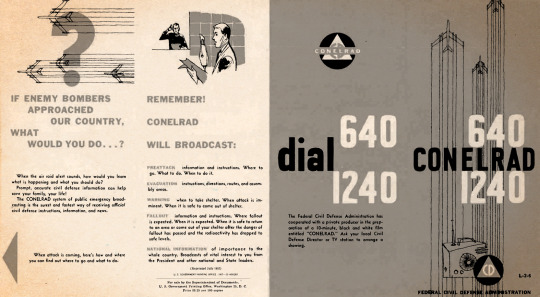
U.S. Federal Civil Defense Administration’s CONELRAD brochure - 1957.
#vintage illustration#vintage brochures#civil defense#federal civil defense administration#conelrad#emergency broadcast system#cold war#american civil defense#the 50s#the 1950s#nuclear war#emergency alert system#nuclear attack#control of electromagnetic radiation#electromagnetic radiation#radiation#soviet bombers
3 notes
·
View notes
Text
So, do you know what happens when you let an aircraft design bureau known for making bombers, make an interceptor?
You get, from Convair, know for making the B-58 Hustler
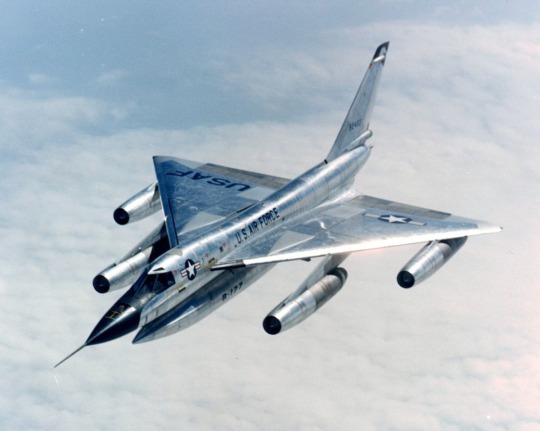
the world’s first supersonic bomber
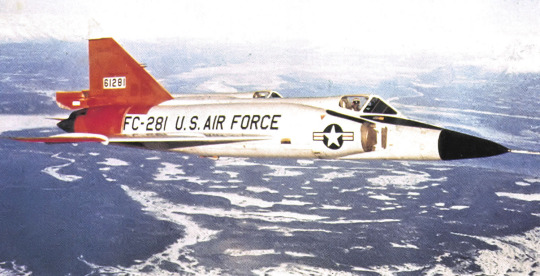
The F-102 Delta Dagger

And the F-106 Delta Dart
And from Tupolev, known from pretty much being THE bomber-maker of the Soviet Union, among them the Tu-22 “Blinder”
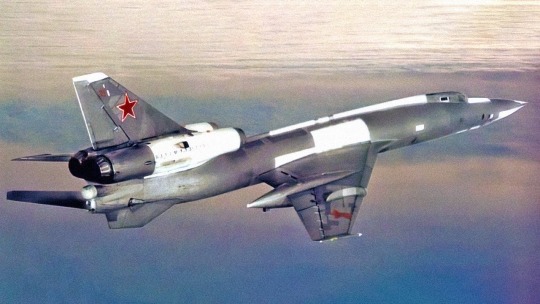
The Soviet Union’s first supersonic bomber, and the only supersonic bomber to be available for export customers, you get

The Tu-128, the world’s heaviest “fighter” aircraft.
Oh, and for the opposite, see what happens when you let Dassault, known for making France’s fighter jets since WW2

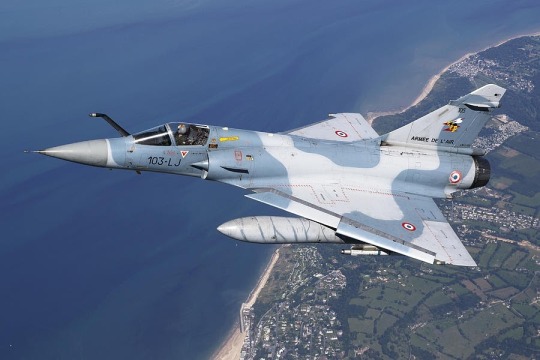
especially supersonic delta wing designs, you get

The Mirage IV, the world’s shortest-ranged nuclear bomber.
246 notes
·
View notes
Text
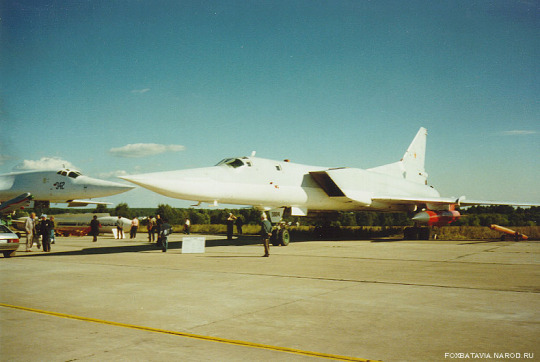
3 notes
·
View notes
Text
Biden has begun dropping breadbaskets for the people of Gaza, he is such a kind and benevolent leader <3
#winter war#this is a reference to the winter war#where the soviets claimed bombers carrying incindiary bombs were actually dropping food and supplies#its this misinformation that led to the name of molotov cocktails#the name comes from a nickname for said bombs#the finnish people called them molotov breadbaskets as a reference to the soviet foreign affairs minister#the finnish resistance would then nickname their improvised anti tank weapons molotov cocktails#in summary biden fucking sucks and deaerves to be impeached
0 notes
Text
What does life in North Korea look like outside of Pyongyang? 🇰🇵
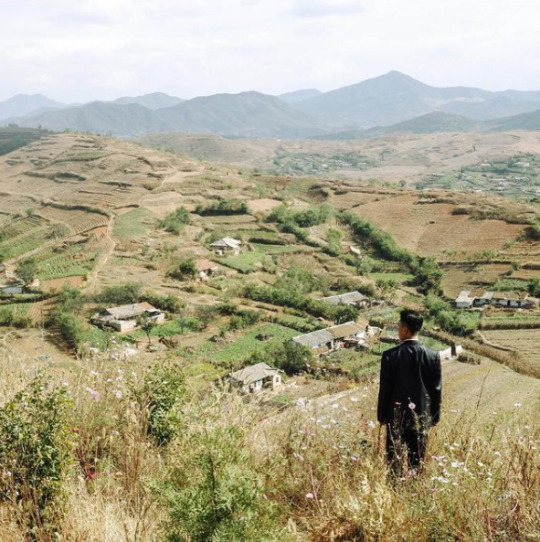
Hey, I'm back again with a very scary "tankie" post that asks you to think of North Koreans as people, and to consider their country not as a cartoonish dystopia, but as a nation that, like any other place on earth, has culture, traditions, and history.
Below is a collection of pictures from various cities and places in North Korea, along with a brief dive into some of the historical events that informs life in the so-called "hermit kingdom."
Warning: very long post
Kaesong, the historic city
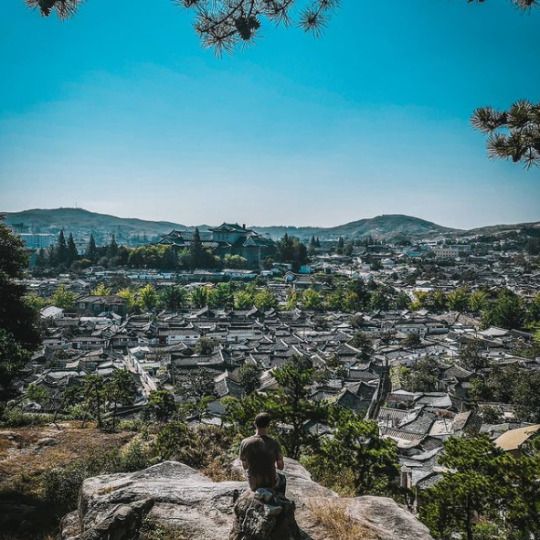
Beginning this post with Kaesong, one of the oldest cities in Korea. It's also one of the few major cities in the DPRK (i.e. "North Korea") that was not completely destroyed during the Korean war.
Every single city you'll see from this point on were victims of intense aerial bombardments from the U.S. and its allies, and had to be either partially or completely rebuilt after the war.
From 1951 to 1953, during what has now become known as the "forgotten war" in the West, the U.S. dropped 635,000 tons of bombs over Korea — most of it in the North, and on civilian population centers. An additional 32,000 tons of napalm was also deployed, engulfing whole cities in fire and inflicting people with horrific burns:
For such a simple thing to make, napalm had horrific human consequences. A bit of liquid fire, a sort of jellied gasoline, napalm clung to human skin on contact and melted off the flesh. Witnesses to napalm's impact described eyelids so burned they could not be shut and flesh that looked like "swollen, raw meat." - PBS
Ever wondered why North Koreans seem to hate the U.S so much? Well...
Keep in mind that only a few years prior to this, the U.S. had, as the first and only country in the world, used the atomic bomb as a weapon of war. Consider, too, the proximity between Japan and Korea — both geographically and as an "Other" in the Western imagination.
As the war dragged on, and it became clear the U.S. and its allies would not "win" in any conventional sense, the fear that the U.S. would resort to nuclear weapons again loomed large, adding another frightening dimension to the war that can probably go a long way in explaining the DPRK's later obsession with acquiring their own nuclear bomb.
But even without the use of nuclear weapons, the indiscriminate attack on civilians, particularly from U.S. saturation bombings, was still horrific:
"The number of Korean dead, injured or missing by war’s end approached three million, ten percent of the overall population. The majority of those killed were in the North, which had half of the population of the South; although the DPRK does not have official figures, possibly twelve to fifteen percent of the population was killed in the war, a figure close to or surpassing the proportion of Soviet citizens killed in World War II" - Charles K. Armstrong
On top of the loss of life, there's also the material damage. By the end of the war, the U.S. Air Force had, by its own estimations, destroyed somewhere around 85% of all buildings in the DPRK, leaving most cities in complete ruin. There are even stories of U.S. bombers dropping their loads into the ocean because they couldn't find any visible targets to bomb.
What you'll see below of Kaesong, then, provides both a rare glimpse of what life in North Korea looked like before the war, and a reminder of what was destroyed.

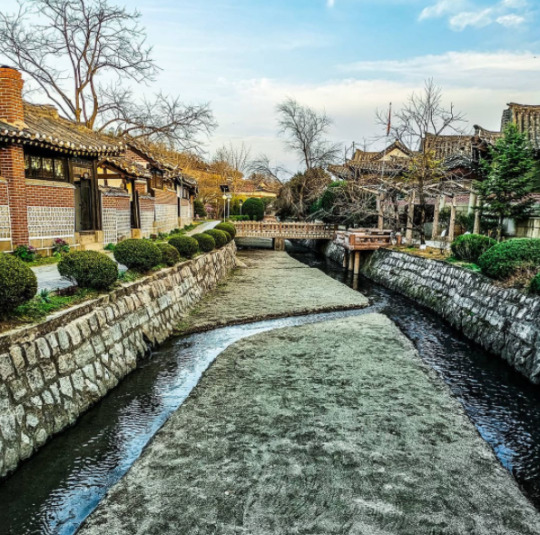

Kaesong's main street, pictured below.
Due the stifling sanctions imposed on the DPRK—which has, in various forms and intensities, been in effect since the 1950s—car ownership is still low throughout the country, with most people getting around either by walking or biking, or by bus or train for longer distances.
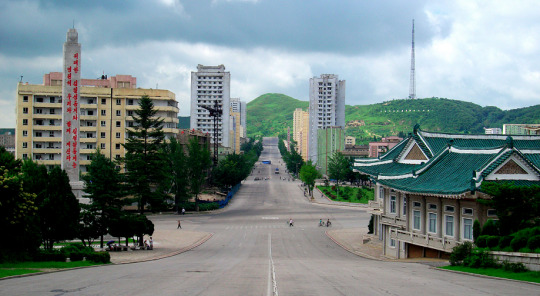
Kaesong, which is regarded as an educational center, is also notable for its many Koryŏ-era monuments. A group of twelve such sites were granted UNESCO world heritage status in 2013.
Included is the Hyonjongnung Royal Tomb, a 14th-century mausoleum located just outside the city of Kaesong.
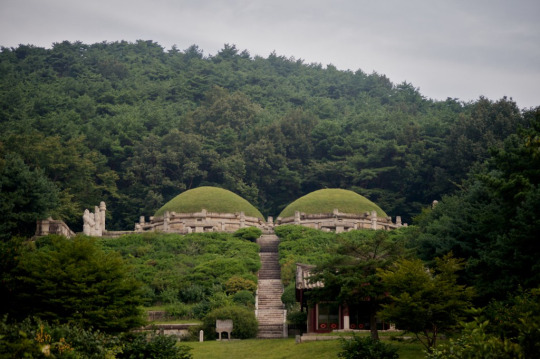
One of the statues guarding the tomb.
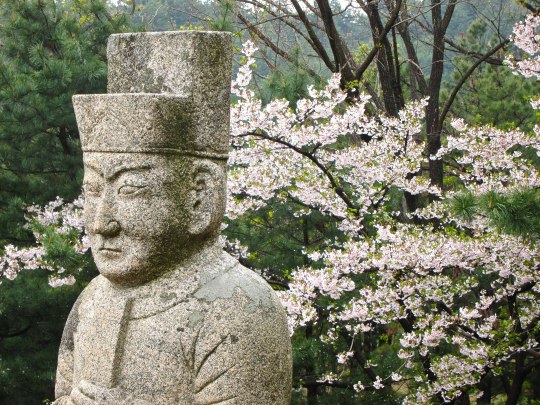
Before moving on the other cities, I also wanted to showcase one more of the DPRK's historical sites: Pohyonsa, a thousand-year-old Buddhist temple complex located in the Myohyang Mountains.

Like many of DPRK's historic sites, the temple complex suffered extensive damage during the Korean war, with the U.S. led bombings destroying over half of its 24 pre-war buildings.
The complex has since been restored and is in use today both as a residence for Buddhist monks, and as a historic site open to visitors.


Hamhung, the second largest city in the DPRK.
A coastal city located in the South Hamgyŏng Province. It has long served as a major industrial hub in the DPRK, and has one of the largest and busiest ports in the country.
Hamhung, like most of the coastal cities in the DPRK, was hit particularly hard during the war. Through relentless aerial bombardments, the US and its allies destroyed somewhere around 80-90% percent of all buildings, roads, and other infrastructure in the city.
Now, more than seventy years later, unexploded bombs, mortars and pieces of live ammunition are still being unearthed by the thousands in the area. As recently as 2016, one of North Korea's bomb squads—there's one in every province, faced with the same cleanup task—retrieved 370 unexploded mortar rounds... from an elementary school playground.
Experts in the DPRK estimate it will probably take over a hundred years to clean up all the unexploded ordnance—and that's just in and around Hamhung.
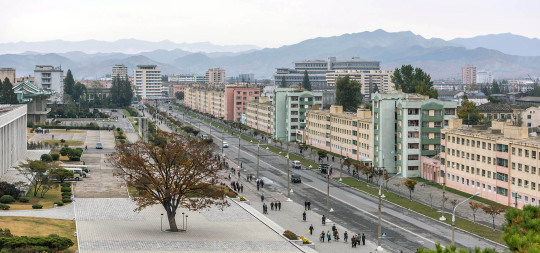

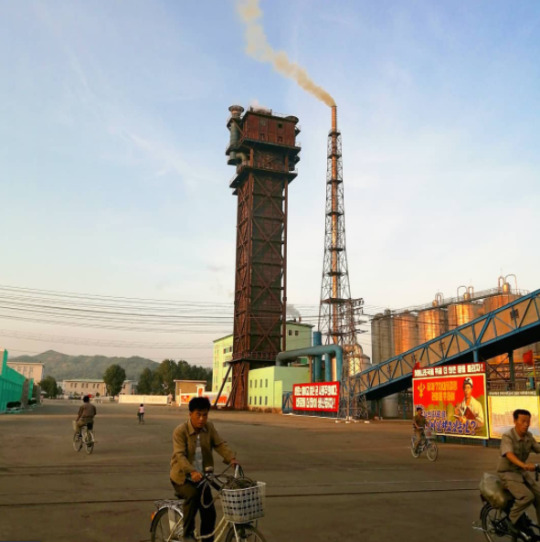
Hamhung's fertilizer plant, the biggest in North Korea.
When the war broke out, Hamhung was home to the largest nitrogen fertilizer plant in Asia. Since its product could be used in the creation of explosives, the existence of the plant is considered to have made Hamhung a target for U.S. aggression (though it's worth repeating that the U.S. carried out saturation bombings of most population centers in the country, irrespective of any so-called 'military value').
The plant was immediately rebuilt after the war, and—beyond its practical use—serves now as a monument of resistance to U.S. imperialism, and as a functional and symbolic site of self-reliance.
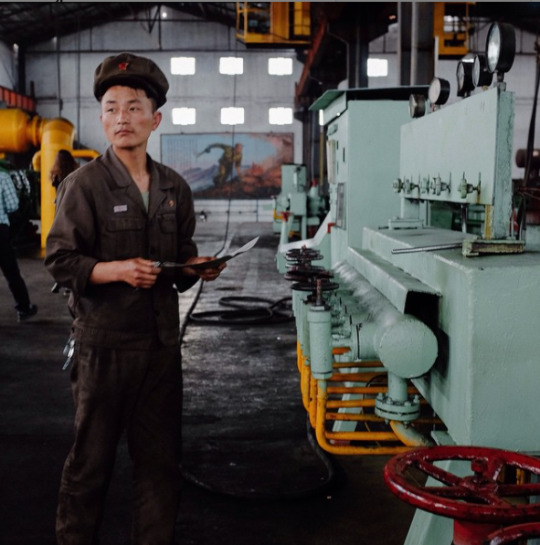
Chongjin, the third largest city in the DPRK.
Another coastal city and industrial hub. It underwent a massive development prior to the Korean war, housing around 300,000 people by the time the war broke out.
By 1953, the U.S. had destroyed most of Chongjin's industry, bombed its harbors, and killed one third of the population.
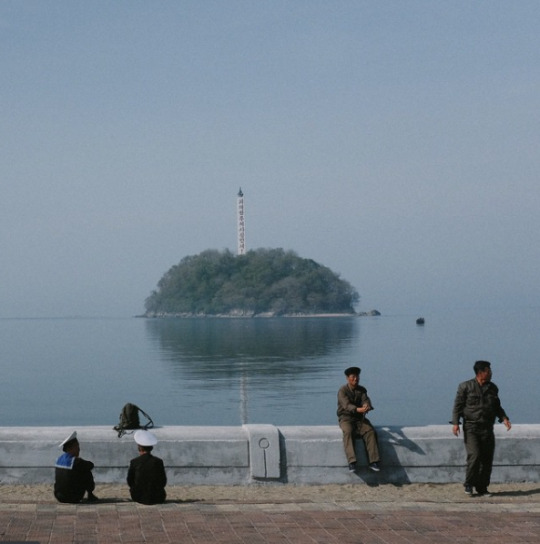
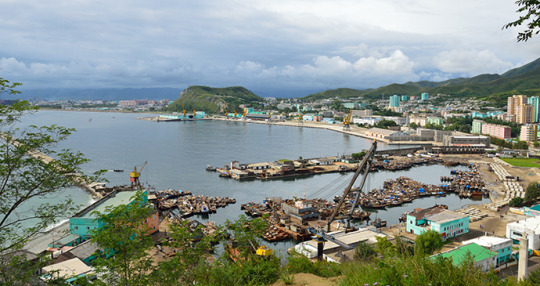

Wonsan, a rebuilt seaside city.
The city of Wonsan is a vital link between the DPRK's east and west coasts, and acts today as both a popular holiday destination for North Koreans, and as a central location for the country's growing tourism industry.
Considered a strategically important location during the war, Wonsan is notable for having endured one of the longest naval blockades in modern history, lasting a total of 861 days.
By the end of the war, the U.S. estimated that they had destroyed around 80% of the city.
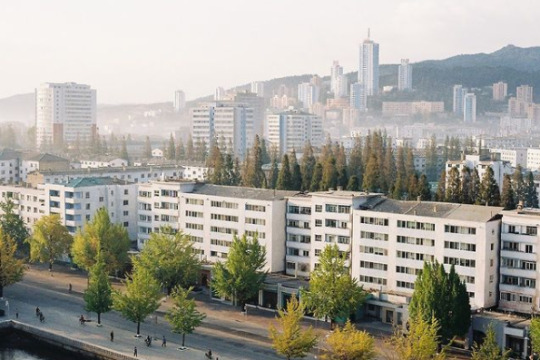

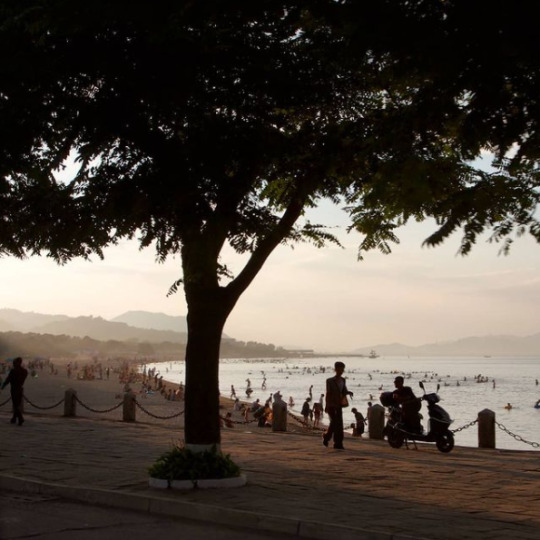

Masikryong Ski Resort, located close to Wonsan. It opened to the public in 2014 and is the first, I believe, that was built with foreign tourists in mind.
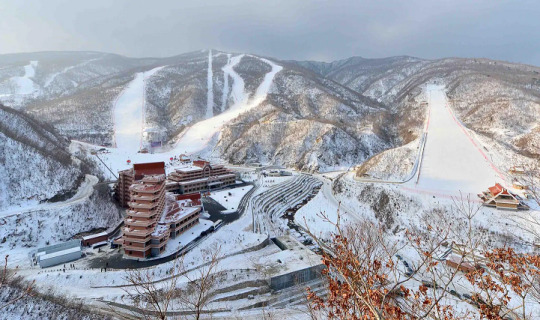
Sariwon, another rebuilt city
One of the worst hit cities during the Korean War, with an estimated destruction level of 95%.
I've written about its Wikipedia page here before, which used to mockingly describe its 'folk customs street'—a project built to preserve old Korean traditions and customs—as an "inaccurate romanticized recreation of an ancient Korean street."
No mention, of course, of the destruction caused by the US-led aerial bombings, or any historical context at all that could possibly even hint at why the preservation of old traditions might be particularly important for the city.
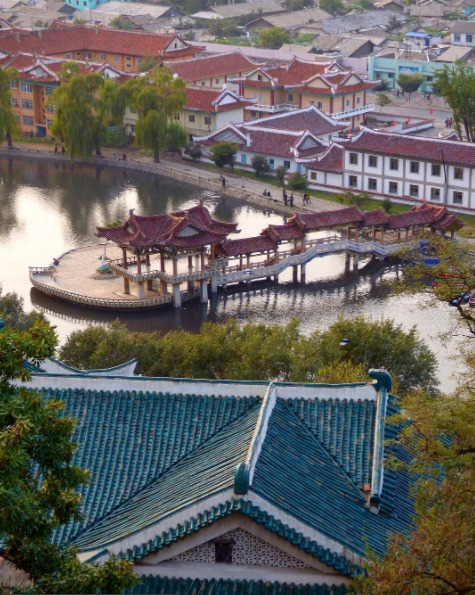

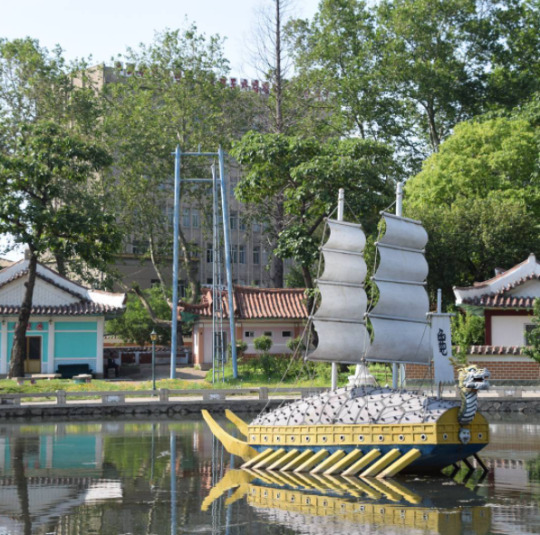
Life outside of the towns and cities
In the rural parts of the DPRK, life primarily revolves around agriculture. As the sanctions they're under make it difficult to acquire fuel, farming in the DPRK relies heavily on manual labour, which again, to avoid food shortages, requires that a large portion of the labour force resides in the countryside.
Unlike what many may think, the reliance on manual labour in farming is a relatively "new" development. Up until the crisis of the 1990s, the DPRK was a highly industrialized nation, with a modernized agricultural system and a high urbanization rate. But, as the access to cheap fuel from the USSR and China disappeared, and the sanctions placed upon them by Western nations heavily restricted their ability to import fuel from other sources, having a fuel-dependent agricultural industry became a recipe for disaster, and required an immediate and brutal restructuring.
For a more detailed breakdown of what lead to the crisis in the 90s, and how it reshaped the DPRKs approach to agriculture, check out this article by Zhun Xu.

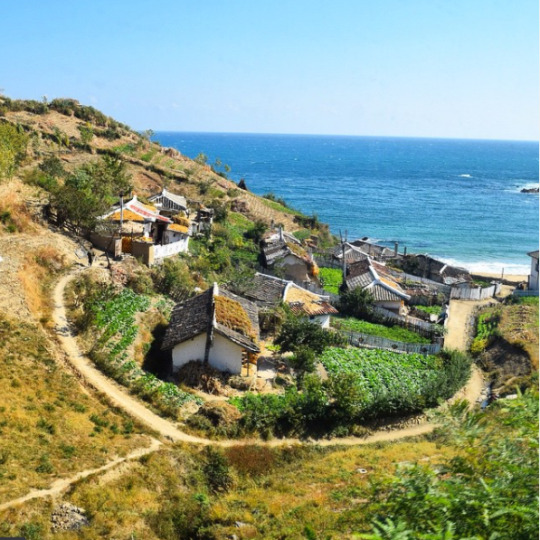
Some typical newly built rural housing, surrounded by farmland.
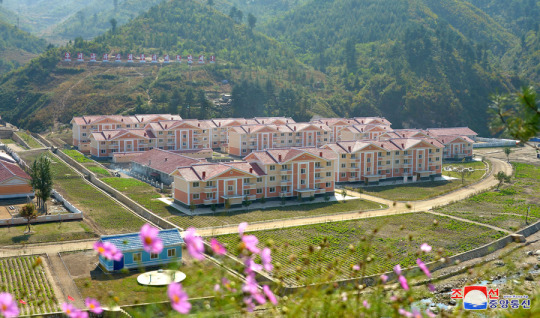
Tumblr only allows 20 pictures per post, but if you want to see more pictures of life outside Pyongyang, check out this imgur album.
#dprk#north korea#i've had this post unfinished in drafts for almost a year#also sorry about the spelling and potential formatting issues it's a nightmare to edit at this point#it was literally just meant to be a collection of picture and then the writing just sort of happened#enjoy the brief heritageposts history lesson i guess
5K notes
·
View notes